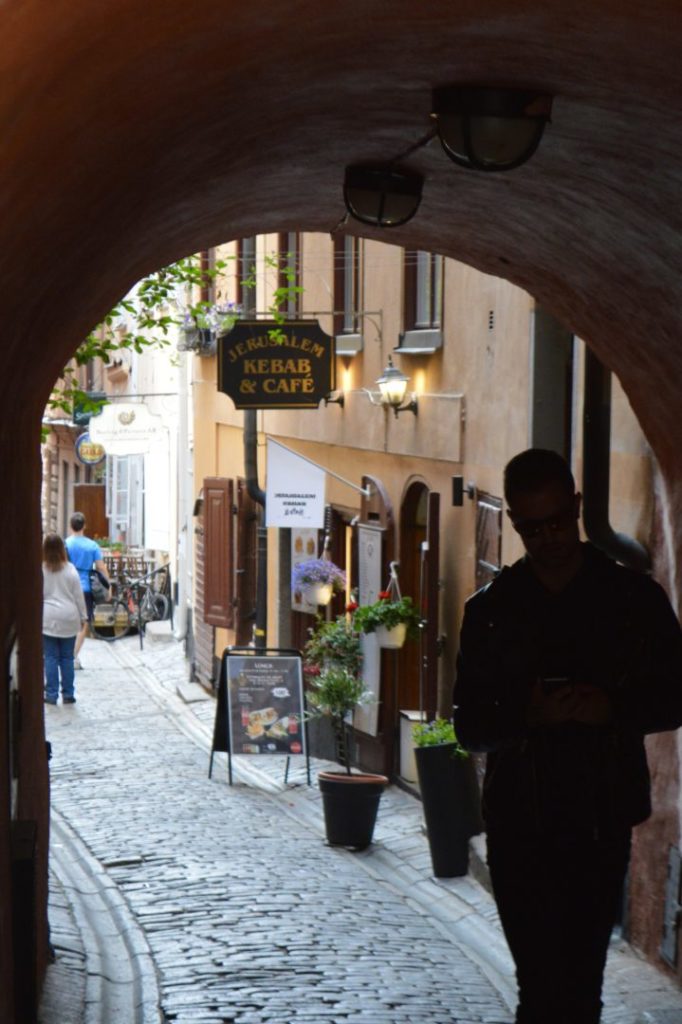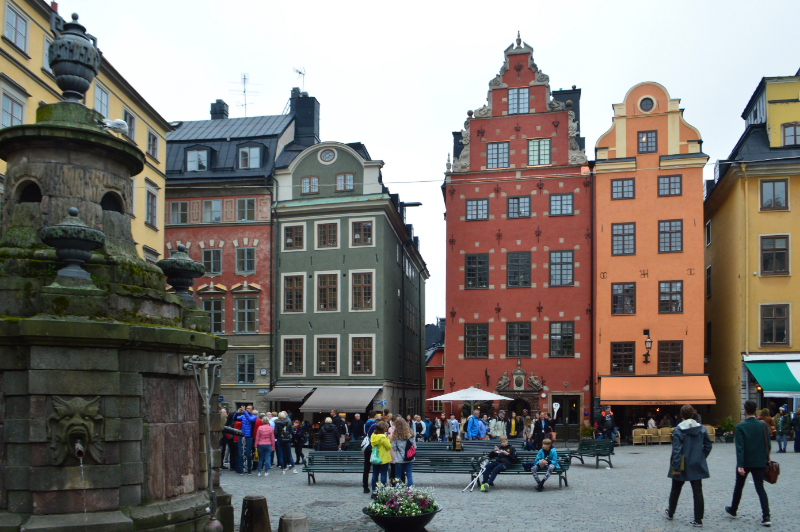Summer days in the Swedish capital seem never ending. The sun refuses to set until around 10 p.m., leaving a romantic glow upon the city for the evening hours. It is a city made up of a string of 14 islands, most interconnected by bridges; the blue of the water and the green of the land fit together like irregular shaped pieces of a giant jigsaw puzzle.
Stockholm has a unique landscape, with barely any high-rise buildings, except for church spires that pierce the otherwise almost unobstructed skyline. Since Sweden was neutral during the Second World War, Stockholm was not touched by war and its old neighbourhoods are pristinely preserved. Low buildings in different shades of pastel colours inspired by many varied styles of architecture abut each other, especially in the Old Town, Gamla Stan.
To get around the city conveniently, we bought a Stockholm Pass, which can be purchased in advance (www.stockhompass.com). It enabled us to hop on and off buses, visit museums, and take the always enjoyable ferry rides.
But besides touring, we also wanted to explore Stockholm’s Jewish life here with its deep-rooted history. Although Sweden has the largest population of Jews in the Scandinavian countries, an estimated 20,000, 4,500 of whom live in Stockholm, it’s a number minuscule compared to other European countries.
To learn more about Stockholm’s Jewish past, we took a three-hour walking tour with our knowledgeable guide David Kay from Milk and Honey Tours. We started at our hotel, The Diplomat, a turn of the 20th century Art Nouveau building overlooking the Nybroviken Bay. We walked along the waterfront toward the Gamla Stan, where Jews were first officially allowed to settle in Sweden. Ferry boats lined the docks, and in the many bars and restaurants, including many vegetarian ones, people were relaxing after work, meeting friends and enjoying the summer sun.
During our walk, we crossed a bridge to Gamla Stan, an old harbour town built on a hill with the Royal Palace on top. As we were winding our way up narrow, cobbled streets, passing eye-catching storefronts, our guide told us a fascinating story:
In 1774, David Isaac, a wealthy gem merchant and seal engraver, was invited to settle in Stockholm by King Gustav III, to help finance his military expeditions. Unlike Jews who came to Sweden before him and accepted conversion for the privilege of staying, Isaac made it a condition for settling there that he be allowed to practise as a Jew. He also insisted that he bring with him other Jewish families so a congregation could be formed.
Our guide then pointed out the middle storey of a three-storey apartment house where the first synagogue in Sweden had been housed. This building, just off the island’s famous main square where the Nobel Museum is located, was recently purchased by the Jewish community to be converted into a Jewish museum.
Our tour ended by crossing to another island to see the magnificent Great Synagogue. Built in 1870 in a Moorish-inspired style, it is a testimony to the wealth and privilege the Jews attained by that time and the tolerant attitude of their adopted country. It is now a Conservative synagogue with a female rabbi.
As if to repay their welcome to Sweden, since settling there Jews have contributed to the cultural and economic life of Sweden.

The elegant department store MKon, in the centre of Stockholm, was established by the Saks family, who also owned the famous Saks Fifth Avenue department store in New York. The renowned publishing house, Bonniers, founded in 1831, is still important in the literary life of this country. Stockholm’s Great Concert Hall was built by the textile merchant Isaac Hirsch, and the city hall itself was largely financed by Jewish donors. But because of intermarriage and assimilation many of these old families are no longer Jewish; however, they still continue to support Jewish causes.
But today the climate for Jews has changed here. Sweden is no exception to the rise of anti-Semitic incidents worldwide. Recent news reports told of harassment, intimidation, and attacks on Jews in Malmo, Gothenburg and other towns.
In Sweden, anti-Semitism has found oxygen both among white supremacists on the far right and Israel-bashers on the far left.
Nevertheless, Jewish life goes on, albeit on a reduced scale. We spoke with a local high school senior, Eliot, involved in the Jewish Youth Organization, the only such group in Sweden. He told us that for him, as for many of his peers, Glamsta, the only overnight Jewish summer camp, was his most important experience in maintaining his Jewish identity.
Located in Stockholm’s picturesque archipelago, this small camp attracts children from all over Sweden. “This was the first time I was involved with Shabbat rituals,” Eliot said, “and it made me proud to be Jewish. In this camp you also become part of a close-knit community of young Jews.”
READ: VIETNAM: TRYING TO REINVENT ITSELF
Another important institution that helps to keep the community together is the Bajit (House), a Jewish cultural community centre built in 2016. It houses the Hillel school, the only Jewish day school in Sweden, with 360 students in classes from kindergarten to sixth grade, and it also sponsors many cultural events. Like all schools in Sweden, including universities, this one is also tuition free.
Although most Swedish Jews hesitate to show any identifiable sign of their religion, the Chabad rabbi of Stockholm walks around with a kippah. Chabad is located on the island of Sodermalm, formerly a working-class neighbourhood that gentrified into a kind of Soho, with vintage and antique shops, art galleries and ethnic restaurants. Chabad holds an Orthodox minyan, hosts Shabbat and holiday meals, houses a kindergarten, and is a gathering place for youngsters. Chabad also offers bar/bat mitzvah lessons and Jewish studies, and caters to tourists by delivering kosher meals to their hotels.
Stockholm’s Great Synagogue is not only a historical landmark, as in many other places in Europe, but also a functioning one. One Shabbat morning during our stay we witnessed a double bat mitzvah.
One of the celebrants was a local girl, the other from New York, who chose to celebrate this important occasion in Stockholm because she and her family are active in Paideia, a Swedish-based organization dedicated to the revival of Jewish culture in Europe. Both girls read from the Torah, their young voices ringing out in this soaring historical interior which can easily seat 900 people. On that Shabbat fewer than a hundred attended, but these young voices were the hope for the continuation of Swedish Jewish life.
Author

Erika Leviant has written travel pieces for newspapers and magazines in the United States and Canada. Her granddaughter, Ella Kaplun, is an English major at NYU.
View all posts

